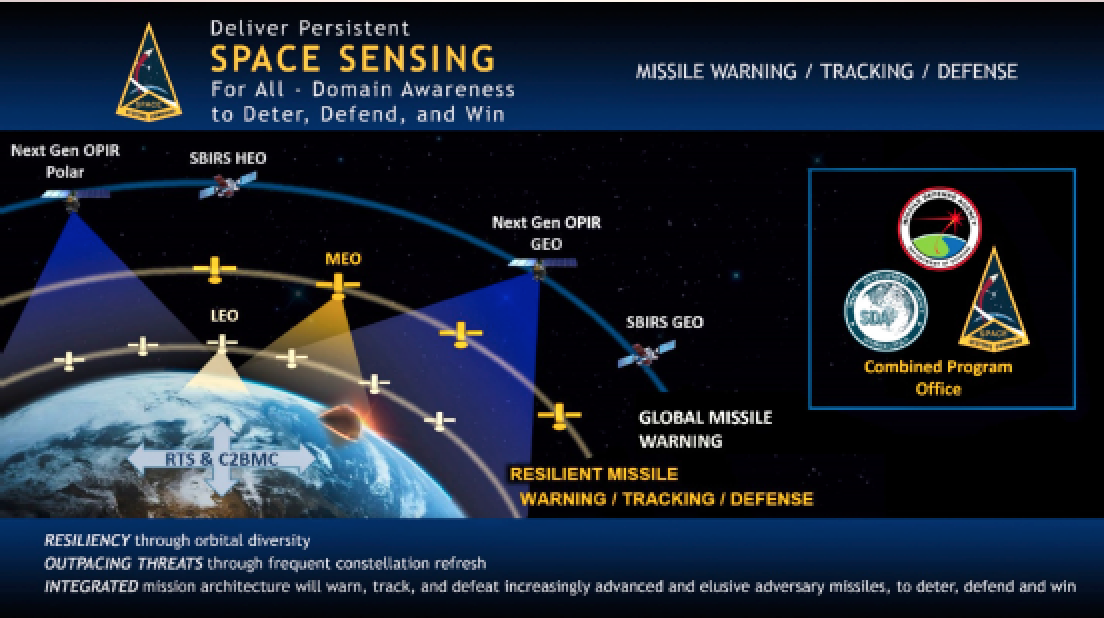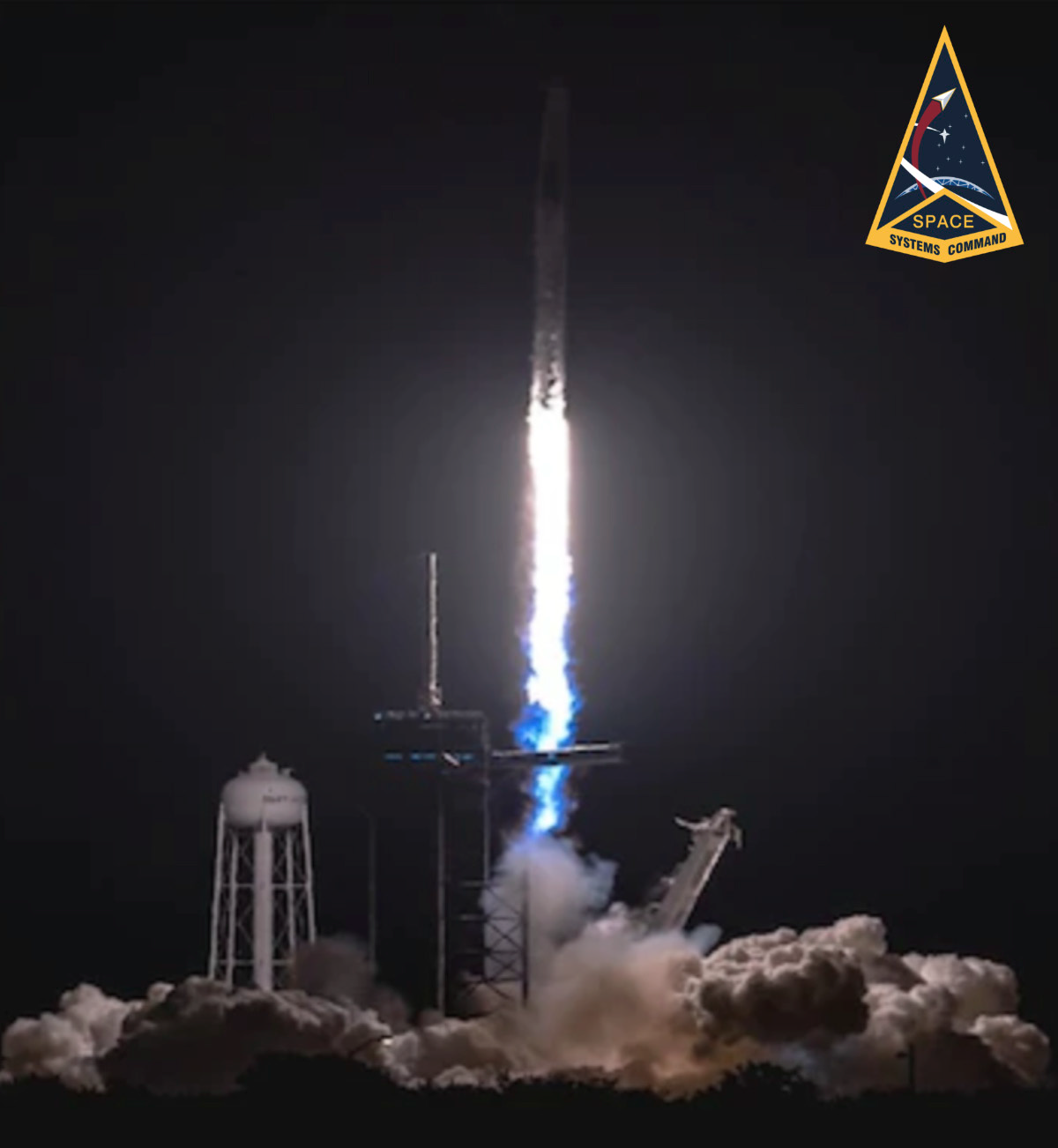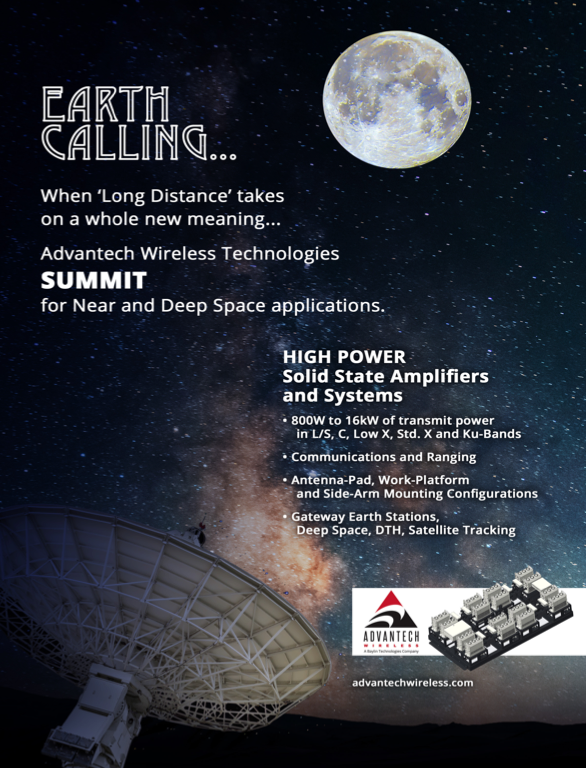How Space Systems Command is aligned with mission partners in addressing the threat.
The rapid technological changes that have made space more accessible for everyone have also led to improved and rapidly evolving threats from adversarial challengers, including in the field of hypersonic missile systems. Fortunately, technological advances also are being made in the United States’ ability to counter those threats, especially in missile warning, tracking and defense capabilities.


Lt. Col. Gary Goff
“In 2021, the U.S. tracked 1,168 missile launches globally. In just the first 10 months of 2022, there were 4,150 missile launches tracked globally – 3,000 of them in Europe alone. We’ve been observing hypersonic tests and launches throughout the last decade and see exactly what our adversaries are up to, and the challenges that are presented to both our missile warning and our missile defense architectures.”
— Lt. Col. Gary Goff, Materiel Leader, Resilient Missile Warning/Tracking/Defense Space at Space Systems Command
To counteract the threat — from the increased number of traditional missiles as well as the growing category of missiles maneuvering at hypersonic speed — the United States Space Force (USSF) is bringing a multi-domain, space-based approach to the fight.
Through multiple efforts, USSF and Space Systems Command (SSC) are working toward a proliferated missile warning/tracking architecture, with frequent technological refreshes, improved data collection and analysis to better identify, track and eliminate missile threats.
Hypersonic weapons are a class of munitions that operate at speeds at, or above, five times the speed of sound (Mach 5), said Timothy Heath, senior international defense researcher with the RAND Corporation, a nonprofit, nonpartisan research organization. Unlike a ballistic missile, which has a fixed trajectory, hypersonic weapons can maneuver in the atmosphere.
“Hypersonic weapons are notoriously difficult to master, because of the metallurgy challenge and the engineering challenges, particularly in designing a weapon that can travel for long distances in the atmosphere at Mach 5 and above.”
— Timothy Heath, senior international defense researcher with the RAND Corporation
That’s because traveling significantly faster than the speed ofbsound exposes weapon surfaces to very high temperatures caused by friction and compression of the air, typically requiring airframes to be constructed from high-performance composite materials, said Ben Goldman, a launch systems analyst with the Aerospace Corporation, the only federally funded, research and development center for the entire space enterprise.
Historically, cruise missiles operated in the atmosphere but didn’t move at hypersonic speeds, Heath said, making them easier to identify, track and destroy. Ballistic missiles could move at hypersonic speeds, but were launched into space and followed a predictable trajectory.

Timothy Heath
“You can monitor them on radar and you can start to anticipate where they will land, just by analyzing the trajectory. In a way, hypersonic missiles blend the advantage of a ballistic missile — which is the speed — with the maneuverability of a cruise missile, and that makes them extremely difficult to defend against,” Heath added.
Hypersonic glide weapons are launched into the air by a ballistic missile or other kind of missile to provide the thrust, and then the hypersonic missile detaches and glides on a path at hypersonic speeds and then strikes its target, Heath said. Another type is a missile that travels at hypersonic speeds and is one weapon, from launch to detonation.
The term “hypersonic,” much like “cruise” and “ballistic,” are labels of convenience that don’t really define distinct weapon system categories. Cruise missiles can be “hypersonic” missiles, and many so-called “ballistic” missiles such as aeroballistic missiles or missiles with maneuvering reentry vehicle (MaRV) payloads also can be hypersonic missiles.
“It depends on who you ask, and how you ask the question. It’s more of a label than it is an actual category of threats. We can all agree that a hypersonic weapon is something that can glide or fly and maneuver at Mach 5 or greater speed but beyond that the details will vary, and it’s important to get a handle on that ambiguity.” — Steven Dunham, a senior project leader with the Aerospace Corporation
Dunham said people need to proceed with caution in efforts to define “hypersonic weapons,” particularly in the context of missile warning, tracking and defense to make sure not to oversimplify the wide spectrum of maneuvering capabilities missiles routinely demonstrate today and, in the worst case, potentially overlook some segments of the threat as a consequence of a desire for simple solutions.
Dunham continued, “For example if you were to ask specifically what a hypersonic glide vehicle is, as opposed to asking what a hypersonic weapon is, then you might get the same answer about speed – Mach 5 or above – but it may also say, ‘in which the trajectory is in the atmosphere for some significant period of time, or even all of the flight. Or, if you were to change the question and say, ‘What types of missile systems are considered hypersonic weapons’, then you may get a different answer all together.” Dunham noted, adding that the real distinction is hypersonic missiles can maneuver at high speeds. It’s also important to think about the key drivers of hypersonic development.
“In order to have much utility to military planners, modern missiles have got to be able to reach the target, hit it with the accuracy required and also do so while evading the missile defenses that threaten it along the way. And the only way you can do that is if your payload can maneuver after (the initial rocket) boost. If you cannot maneuver after boost, you’re going to struggle with achieving the accuracy you need as well as evading missile defenses. The military utility of weapons systems is really driven by the need to maneuver.

“One way to think about whether or not something is hypersonic is to think in terms of just the physics alone: if it can glide aerodynamically and it flies more than several hundred kilometers, it’s going to be maneuvering at hypersonic speeds because the physics demands it. The problem is, we don’t label them that way.
“The majority of missile threats in the world are no longer ballistic missiles, because they do maneuver after boost, and the threat from China, Russia, and even North Korea, is quite real. Their trajectories are not simply based on the initial propulsion provided by the booster. Things happen after boost that change the trajectory in a wide variety of ways.”
In terms of missile warning, it’s important to identify the threat, characterize the attack and determine where the warhead is headed and when it will hit the target as early as possible, Dunham said.
A missile with a single warhead on a simple ballistic trajectory is one thing; a missile with multiple reentry vehicles that can maneuver after the initial boost and strike multiple cities hundreds or even thousands of miles apart from one another is a different problem entirely.
SSC is partnering with the Missile Defense Agency (MDA) and the Space Development Agency (SDA) through the Combined Program Office (CPO) to deliver a set of resilient missile warning and tracking solutions that proliferates lower- cost satellites in both Low Earth Orbit (LEO) and Middle Earth Orbit (MEO), Goff said.
SSC is responsible for acquiring the MEO sensors; SDA will acquire the LEO sensors; and MDA will help integrate the data from the sensors to the shooters to ensure that the U.S. and its allies have the data they need, when they need it.
SSC is taking a “spiral” approach by rapidly deploying capabilities in phases that can provide initial capability and evolve into a more mature architecture over time, Goff said.
The first capability set, called Epoch 1, will be delivered by two different satellite providers, each taking a slightly different approach to solving the hypersonic detection challenge.
Epoch 1 will deliver in the 2026 timeframe and SSC will continue to build out these capabilities by adding new technologies and additional satellites in subsequent Epochs every two to three years — thereby exploiting current assets.
“We’re not replacing our operational systems for missile tracking; we’re adding more and better data to it, so we can see and keep in custody of these targets,” Goff said. “Similarly, for missile warning, we’re going to add our new sensors into that baseline that still preserves the always available, unambiguous detection of a threat worldwide at any time. We’re also building a ground architecture that leverages and plugs into an interconnective web of different capabilities.”

The threat is dynamic and so SSC’s approach has to be, as well.
Another key element is the ability to leverage the commercial space sector to quickly design, produce and launch satellites — because there will be new threats the U.S. hasn’t yet anticipated, Goff said.
In March, SSC released a Rapid Fielding Initiative (RFI) for Epoch 2, looking for industry feedback and collaboration on their approach to buying this next round of satellites and ground systems.
The threat of hypersonics “is an indication that the gap between the U.S. and Chinese technological capabilities is narrowing,” Heath said. “However, in virtually every other major technology field — computer technology, microchips, jet engines, biotech, all kinds of advanced materials — the U.S. (is the leader.)

“It’s worth keeping that in perspective,” Heath said. “The U.S. has enormous resources — not only our own, but our allies and partners contribute greatly, as well. Given that China has to rely primarily on itself and perhaps Russia, the U.S. remains pretty strong in almost every area outside hypersonic.”
“Our adversaries are moving forward with their deployment of hypersonic weapons and we are rapidly expanding our space- based systems to counter this threat,” Goff said. “As our pacing challenges continue to advance, we are confident that our integrated and resilient end-to-end missile warning, tracking and defense enterprise architecture solution with MDA and SDA will protect our nation and our allies.”
Space Systems Command is the U.S. Space Force Field Command responsible for acquiring and delivering resilient war fighting capabilities to protect our nation’s strategic advantage in and from space. The Command manages an $15 billion space acquisition budget for the Department of Defense and works in partnership with joint forces, industry, government agencies, academic and allied organizations to accelerate innovation and outpace emerging threats. Our actions today are making the world a better space for tomorrow.
Contact Space Systems Command at SSC@spaceforce.mil Also, follow on LinkedIn.
How Space Systems Command is aligned with mission partners in addressing the threat


